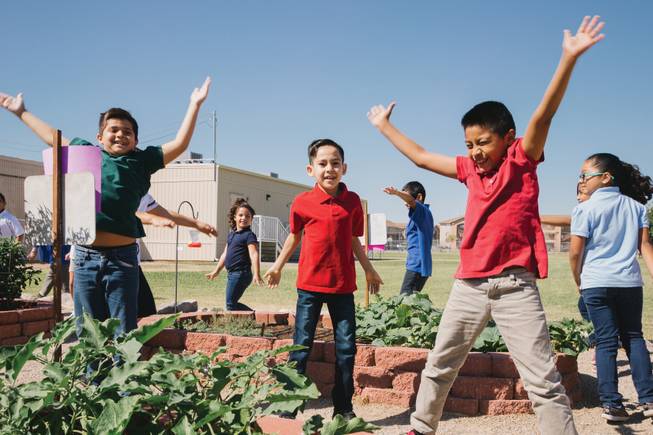
Wade Vandervort
Students exercise in the garden at Quannah McCall Elementary in North Las Vegas. The Title I school — which staffers say is within a ‘food desert’ lacking market and restaurant options — uses the thriving green space to help kids connect with fresh food in ways that might impact the cycle of hunger and poor health.
Monday, Oct. 2, 2017 | 2 a.m.
Recession’s injuries do not heal on an even timeline, and one of Southern Nevada’s deepest wounds refuses to close.
Food insecurity threatens to derail the region’s nascent recovery and ripple through parts of the community rarely thought of as connected to it.
One in 7 households in Clark County qualifies as food insecure, defined by Three Square Food Bank as not having access to sufficient nutritious food. In the valley’s hardest-hit ZIP code — 89106, near downtown — that share leaps to more than 25 percent.
This alarming rate contributes to Nevada’s national rank of 31st in food insecurity from 2013-15, according to the United States Department of Agriculture. That represents a vast improvement from the state’s recession-era floor of 46th, but compared with the days before the bust, Nevada remains troubled. Only West Virginia experienced a steeper jump in food insecurity than Nevada from 2003 — when the state boasted one of the 10 lowest rates in the country.
“I left (Las Vegas) in 2005 and came back in 2010 and could not believe the difference in that span of time as to how many more were in poverty,” said Cheri Ward, executive director of the nonprofit Communities in Schools of Southern Nevada, which addresses food insecurity along with other factors dragging down graduation rates and contributing to the cycle of hunger, poor health and socioeconomic struggle.
Attacking the issue requires a two-pronged approach that addresses the immediate need to feed people and systemic problems related to nutrition and food delivery. In both columns, society’s most vulnerable make up an outsized portion of the afflicted.
More than 106,000 children comprise about 40 percent of the county’s food insecure, and hungry kids struggle to learn — the Clark County School District’s lowest-performing schools serve large numbers of students from food-insecure households, while its best-rated schools correlate to the lowest incidence of hunger. A study from the University of Kentucky Poverty Research Center finds that “children in families suffering from food insecurity are more likely to suffer from a wide array of negative health, nutrition and educational outcomes.”
The elderly also face enormous risk, as nearly 14 percent of Nevada’s seniors also fit the definition of food insecurity. A report by United Health Foundation indicates “the prevalence of food insecurity among seniors is expected to increase through 2025, when the youngest baby boomers turn 60. Compared with younger adults, seniors living at home are at an increased risk of hunger due to poor health conditions and food-management skills; lack of reliable social support and transportation; poverty; and disability or functional limitations that impact their ability to obtain or prepare food.”
Individual hardship corrodes the community beyond the obvious. Food insecurity underlies persistent problems in education, health care and the local economy.
A 2014 report by the nonpartisan Bread for the World Institute estimates food insecurity increases health care costs in the U.S. by at least $160 billion each year. The condition links to depression, cardiovascular disease, high blood pressure, diabetes and other mental and physical ailments.
Those consequences affect everyone. The Center for American Progress estimated in 2010 that it cost every citizen $542 to deal with the national hunger problem, and that it caused the economy $168 billion in lost productivity.
On the local level, Ward thinks the community doesn’t realize the depth of the problems, or all the ways they interconnect.
“There are just so many factors,” she said, “because with the hunger comes everything else."
WHO IS MOST VULNERABLE?
Hunger and food insecurity are not exact synonyms. Being hungry is a physiological state, a sensation of discomfort over an empty stomach that, if prolonged, can come with malnutrition and serious health effects. So hunger is a consequence of food insecurity, which describes the systemic problem of economic, social and cultural ills tied to not getting enough food or nutrition.
The United States Department of Agriculture keeps tabs on national food security, and in 2016 reported that 12.3 percent of American households were food-insecure at least some time during the year, with 5 percent severely disadvantaged such that at least one family member reduced food intake or disrupted eating patterns.
Rates are substantially higher for Black and Hispanic households, those at or near the poverty line and those headed by a single parent. Regionally, the South shows the greatest prevalence. But recent analysis from AARP indicates: “At least some degree of food insecurity exists in every social grouping examined.”
Yet research has focused more and more on two demographics: Children are most at risk of developmental issues related to hunger, while it further compromises the often fragile health of seniors.
Measures of food security
Each December, the USDA surveys 45,000 households on 18 indicators determining their level of food security. To be classified as “food-insecure,” households must affirm three or more. Those with “very low food security” affirm at least five, most commonly: • Worried food would run out before there was money to buy more. • Food ran out before there was money to buy more. • Couldn’t afford balanced meals. • Adults ate less than they felt they should. • Adults cut their portions or skipped meals over more than three months.
Children
A June report from the Brookings Institution called the rate of food insecurity in the world’s richest nation “unconscionably high,” citing the 13 million children in 2015 living in households struggling with hunger. That’s 1 in 6.
USDA data show that adults often make sacrifices to spare their children, yet families still depend on a social safety net that can’t fill all the gaps. “Because early childhood is such a crucial phase of physical and social-emotional development, food insecurity in the early years of life is particularly detrimental and can compound the effects of other risk factors associated with poverty,” the Center for the Study of Social Policy asserts in a recent report.
Obesity is a risk, as many inexpensive food products are high in calories and lack nutrition, and it leads to chronic illnesses such as diabetes and heart disease. And hungry children have been shown to have trouble at school, behaviorally and academically, which increases the chances of food insecurity prevailing into adulthood. According to the University of Kentucky Center for Poverty Research: “Holding income and other factors constant, a high school graduate is 20 percent less likely to be at risk of hunger compared with a high school dropout, and a college graduate is 40 percent less likely.”
Seniors
Sometimes called the “hidden hungry,” seniors are the fastest-growing group dealing with food insecurity, according to the nonprofit Feeding America. Many live on fixed incomes, so financial limitations can keep them from buying adequate food. That might cause or amplify health issues, diverting money to medical care that could be spent on food or other necessities. Among the senior households it serves, Feeding America finds more than 60 percent have chosen at some point between food and care as well as utilities, while 49 and 58 percent, respectively, have gone through the same dilemma over housing and transportation.
Disabilities also affect mobility. Seniors might not be able to get to supermarkets, let alone afford groceries, and just 3 in 5 eligible seniors take advantage of federal benefits through the Supplemental Nutrition Assistance Program, per the National Council on Aging.
According to Move for Hunger, a nonprofit that works with relocation companies to collect and distribute nonperishable food, food insecurity among seniors has jumped 65 percent since 2007. AARP says more than 10 million older adults struggle with it, and that number is expected to explode given that baby boomers are projected to double the 65-and-older population by 2050.
HUNGER'S DEEPER EFFECTS
Median income and hunger
Based on the 2015 American Community Survey by the U.S. Census Bureau, the median income in Clark County was $51,575. The figure was similar for Las Vegas and North Las Vegas, with Henderson topping the municipalities at $63120. Compare that with the median income of those served by Feeding America: $9,175.
The USDA released a report in July about the connection between food insecurity and chronic disease. It found that less food security is generally associated with a higher probability of diabetes, hypertension, coronary heart disease, stroke, cancer, asthma, hepatitis, COPD (chronic obstructive pulmonary disease) and kidney disease. “Food security status is more strongly predictive of chronic illness in some cases even than income,” the report said. And households with very low food security were 15.3 percentage points more likely to have any chronic illness than those with high food security — a 40 percent increase in overall prevalence.
According to the Division of Public and Behavioral Health, more Nevadans die from chronic diseases than from all other causes of death combined. By 2023, the financial burden on the state is expected to exceed $45 billion (it was just over $20 billion in 2011). Most of these illnesses and deaths are preventable. To that end, the Southern Nevada Health District released a draft Community Health Assessment in 2016 that included an improvement plan, some of which suggested that to aid prevention, the county should “expand access to fresh and nutritious foods.”
Research gathered by the American Youth Policy Forum shows that food-insecure children earn lower grades in math and reading, miss more days of school, and graduate high school at lower rates than kids from food-secure families. While hunger is far from the only influencing factor in student success, a strong correlation exists within CCSD schools between food insecurity (mapped by Three Square across the valley's ZIP codes) and student performance. The state moved from Adequate Yearly Progress to its Nevada School Performance Framework for evaluating schools beginning in 2012. Within NSPF is a star rating system in which five stars is the top score and one star is the lowest. Of the 36 CCSD schools with the lowest rates of students on free and reduced-price lunch, 30 rank as 4-star or 5-star schools. These schools cluster largely in economically strong communities in Summerlin and Green Valley.
• Performance ratings for schools with 100 percent of students on free and reduced-price lunch: 4-star schools: 2; 3-star schools: 8; 2-star schools: 21; 1-star schools: 5
• Schools with the lowest rates of students on free and reduced-price lunch (10-28.6 percent): 5-star schools: 19; 4-star schools: 11; 3-star schools: 5; 2-star schools: 1
NEVADA'S WORK ON THE PROBLEM
The state's action plan is laid out in the 2013 report Food Security in Nevada. It indicates that the Great Recession motivated leaders from the government and the private sector to "better understand the root causes and negative impacts of hunger and to explore potential strategies to reduce it.”
The result was the Governor’s Council on Food Security, established by Gov. Brian Sandoval in 2014 and made up of appointed members ranging from Steve Fisher, head of the state Division of Welfare and Supportive Services, to Amy Hill, a Walmart government relations exec representing food retailers. The council’s strategy includes building a network of corporate and local markets, community gardens and anti-hunger efforts working together to eliminate the hunger gap. Its 2016 report says 1 in 6 Nevadans still aren’t sure where they’ll get their next meal, but it also shares accomplishments, including the formation of the Nevada Nutrition Assistance Consortium to ensure collaboration between food and nutrition programs.
That's because food insecurity is not just an issue of general access to sustenance; it's also about the quality of that sustenance. The valley is dotted with so-called food deserts, areas that lack supermarkets or other places to buy fresh food. The USDA's map indicates that within each of these local zones, at least a third of the residents are at least a half-mile from a large grocery store, with the heat and lack of walkability decreasing the chances those without transportation will make the trip. But even if stores popped up in the neighborhoods that most needed them, it might not be a panacea.
In 2015, the New York Times highlighted a food desert in the Bronx, where a city tax-incentive program was created to fund a grocery store. Healthy produce became available to the underserved, but their purchasing habits didn't really change. "In general, fresher, healthier food is more expensive to buy than less healthy processed food. It also takes more time and resources to cook, and keeps for fewer days," the story noted, "... (such that) improving people’s diets will require both making food accessible and affordable and also changing people’s perceptions and habits about diet and health."
The Nevada Legislature passed several bills this session that should aid such efforts here in the Las Vegas Valley.
Senate Bill 429 authorizes municipal governments to establish urban agriculture zones, enabling them to use vacant public land for community gardening. While it has no direct connection, Urban Seed may offer a model not just for establishing farms in compact footprints, but also for operating water-smart and carbon-free. The developing project's founders have pledged to supply local markets, offer educational programming and partner with nonprofits like Three Square and Green Chips to make sure healthy food is as fresh and attainable as possible. “If you are a local government, you know there’s a food desert in your area, but you can’t zone for a food desert. What you can zone for now is an urban agriculture space,” said Jodi Tyson, Three Square director of government relations and a member of the Governor’s Council on Food Security. “This is their opportunity to say, ‘This is a neighborhood that needs access to jobs and fresh, affordable foods,’ and designate that area for opportunities like a grocery store, corner store or permanent farmers market.”
Senate Bill 323 grants the Nevada Division of Welfare and Supportive Services the authority to exempt people from certain eligibility requirements for SNAP that may hinder their advancement in the workforce. “They can maintain their SNAP benefits and also work toward job opportunities that pay enough so they no longer qualify for SNAP,” Tyson said.
Senate Bill 167 created an appropriation to build and maintain gardens in Title I schools, with $400,000 available this year for grants up to $10,000. The bill drew diverse support from lawmakers and the community, from Switch and Nevada State Bank to Three Square.
“The food bank came in support of that bill because we really care about making sure kids know about nutrition and where healthy food comes from, and the opportunity to connect food to curriculum,” Tyson said.
Drafters tapped local crowdfunding platform Green Our Planet to help craft the parameters of the grant and help recipients bring their proposals to life. Why? Because Green Our Planet has been the vector for the creation of the largest school garden program in the country in Southern Nevada — more than 100 are growing in the valley thanks to its expert team, which teaches garden maintenance, farm-to-table cooking and the basics of running a farmers market.
Cofounder Ciara Byrne said the group advised about 40 schools in applying for grants to build or expand a garden under the new law (the application window closed Sept. 29, with award notifications slated for November). She mentioned Roger M. Bryan Elementary and its $7,000 ask to add a hydroponic system, applauding the principal’s vision of supplying the cafeteria with fresh produce grown onsite.
“Last I looked, 82 percent of the schools we work with are Title I. … Many of them are actually in food deserts,” Byrne said, describing a recent garden project shared by neighboring elementary schools Lowman and Manch. “Those parents — there’s no supermarket in a 5-mile radius. So where are they going to buy food? Well, McDonald’s or 7-Eleven or gas stations.” Maybe that’s why about 2,000 people from the area attended the garden’s August launch.
Byrne said the goal generally is not only to provide a platform for STEAM (science, technology, engineering, art and math) education but also to offer kids an extra green space and a sense of connection to healthy food. “Principal Sherrie Gahn at Whitney Elementary on Boulder Highway, she said to me, ‘Ciara, the parents don’t bring them to the libraries. I bring the kids downtown and they’ve never seen it, and they’re just a couple miles away. Poverty is not really a lack of money; it’s a lack of experiences.’ And the garden is a very positive experience for the kids.”
A case study: Quannah McCall Elementary School
To kids who’d never tried fresh strawberries or cantaloupe before a recent school tasting, kale was a hard sell. But after growing the deep-green stalks in their campus garden, students at Quannah McCall Elementary School in North Las Vegas learned that massaging the leaves makes them less bitter, and that dressing whipped up from the cilantro growing nearby makes them delicious.
Principal Ana DeBeauvernet recalls a lot of demand from parents for the recipe. It was a shining moment for everyone who envisioned the raised beds and fruit trees along the school’s street-facing fence as a way to engage the neighborhood in a new way of thinking about cooking and eating. It’s in a noted food desert, meaning the only options are gas stations and fast-food joints.
“I don’t think our families are purchasing those fruits and veggies, because of the mindset that the produce section is the expensive section,” STEAM teacher Sarah Clancy-Wright said of the likelihood poor families might still choose microwave macaroni or a $5 pizza.
“And if they’re not exposed to it at home, it goes into the trash at school,” DeBeauvernet added, explaining that children might not recognize or like certain elements of subsidized meals.
McCall has several designations indicating socioeconomic hardship, from Prime 6 and Title I to the Victory Schools Program. But affording the garden was as simple as giving up some grass for a rebate from the water district that paid Green Our Planet to plan and execute the installation.
Elena Fernandez, a classroom aide and the garden’s champion and chief steward, said the build had spectators in the apartments flanking the school. It quickly went from curiosity to community project, with people young and old coming by to lend a hand.
With the first harvest in the spring, following three seasons of working out the kinks in another campus plot, school staffers have seen students blossom along with the tomatoes, zucchinis, peppers, grapes, melons, herbs and more. On a recent Friday, second-graders picked and bagged basil, thyme and oregano with a recipe for “Kid-Friendly Tomato Sauce.” Neighborhood moms have come to expect such gifts. They have a standing invitation to chef demos in the outdoor classroom, and Fernandez makes a habit of handing paper bags full of produce over the fence.
The 31-year-old grew up in the neighborhood, and she has seen the generosity come back, whether school families bring seeds or dishes made with the donated goods. “The more we expose the parents and the kids to the garden out there where they can actually see it, touch it," she said, "they’ll be more willing to be a part of it.”
Fernandez knows the rhythms of the community, where many parents have casino jobs and leave their kids to feed themselves. She remembers the $2 nachos from the gas station, the hot dogs and noodle cups.
“When you’re home alone and you’re that age, that’s what you eat,” she said. “It’s something I wanted to change. … The neighborhood, they were excited when the garden was being built. I want them to feel like it’s theirs."
Ways to get green for community gardens
State: Under the 2008 USDA Specialty Crop Competitive Grant, Nevada receives access to funds to encourage the cultivation of specialty crops such as fruits, vegetables, tree nuts and more. The next available time to apply is spring 2018.
County: Through the Clark County Neighborhood Grants Program, each project is eligible for up to $500. The application period, which started in July, runs through May 1, 2018. This grant is reserved for areas in unincorporated Clark County, which includes Enterprise, Paradise, Whitney, Spring Valley and Sunrise Manor.
City of Las Vegas: The Neighborhood Partners Fund isn’t specific to gardens, but any neighborhood within the city boundaries can apply starting next spring for up to $5,000 in matching funds (volunteer hours or in-kind donations).
The kids appear to feel that ownership.
“There’s a caterpillar!” yelled one first-grader on a recent afternoon.
“Look at that tomato!” exclaimed another young boy, kids swarming a fat pomegranate gleaming in the sun. The next moment, he was politely showing off the compact cantaloupes and watermelons on the vine, his favorites.
“That little boy last year was throwing tantrums and destroying classrooms,” DeBeauvernet said, adding that hunting for ladybugs calmed him.
Every McCall student spends time in the garden through a weekly humanities class, though Fernandez said they often wander in before school to tend it. If the school is successful in getting a grant under the state’s new program, the outdoor classroom will expand and the cost of operations will be covered for three years. Clancy-Wright is developing a garden yoga program. DeBeauvernet sees an opportunity to partner with the nearby middle school on a farmers market. Fernandez wants to start a cooking class; formalize her composting of cafeteria waste; plant peach, apricot and fig trees and teach the parents to make jam; and build the garden’s presence on social media so anyone can grab simple recipes or tips on extending the life of produce. She recalls her dad picking up crates of expired vegetables from grocery stores when she was little, refusing to buy fresh what he feared he wouldn’t use before it spoiled.
“Nothing changes in the neighborhood, but this does,” Fernandez said of the garden. “People are interested in the next big project.”
The core mission, though, is getting kids and families interested in healthy food, and helping ensure they have access.
“You have those certain kids who will just clean off that plate, and they’re usually the ones that have tummy aches later in the day or they’ll be falling asleep, and a lot of times it’ll be because they didn’t have breakfast,” said Fernandez, who started her work at McCall in the kitchen, and remembers her supervisor pointing out the kids who needed extra meals slipped to them through the side window.
“Hunger impacts everything, because if they’re in the classroom and they’re hungry they can’t think, they can’t function. It affects their mood, it affects their behavior,” DeBeauvernet said. “It’s all connected.”
-
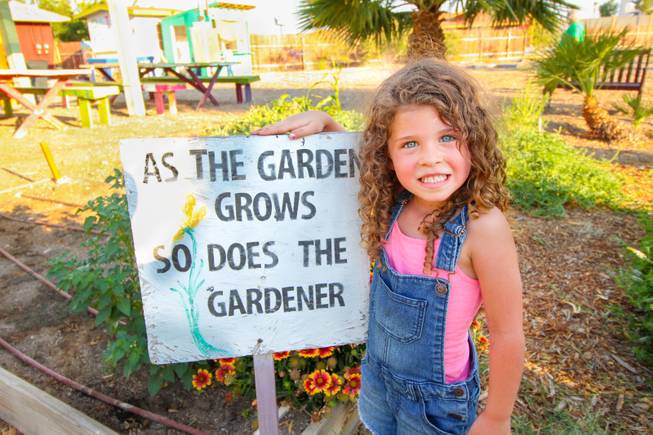
On Oct. 7, the Grow Your Own festival returns to the Vegas Roots urban farm for a second year, aiming to get the community in touch with healthy food.
FROM FOOD 'RESCUE' TO A GARDEN-CENTRIC FEST
Three Square Food Bank works with 184 agency partners and their 417 food programs, which have helped distribute more than 11 million meals in Southern Nevada so far in 2017. More volunteers, agency partners and donations are always welcome, and for every dollar donated, three meals are served.
Donald Cunningham, a driver for Three Square’s Food Rescue Program, wakes up at 3:30 a.m. to help pick up food that Trader Joe’s or Walmart can’t sell.
“This is food that is still great, and edible,” said Alexis Merz, public relations specialist at Three Square. “It can be an apple that has a small blemish, or maybe too large for the display. Retailers throw food away for the craziest reason, and we’re giving it a second life.”
Step 1: Each weekday, drivers like Cunningham begin picking up perishable food at 5 a.m.
Step 2: Drivers visit four to six local stores to fill their refrigerated trucks with food.
Step 3: On this day, Cunningham unloads at the Progressive Pilgrims Fellowship church, where staffers organize the food into groups: bread, sweets, dairy, fruits and veggies.
Step 4: Deacon Robert Carter signs people in to fill up bags, boxes and carts.
The Vegas Roots urban farm has a market on wheels — the Veggie Buck Truck — that brings inexpensive seasonal produce to the underserved where they live or seek other social services. The farm’s home base in the central valley is open 9 a.m.-2 p.m., Tuesday through Saturday, and accepts SNAP.
It’s an inspired setting for the upcoming Grow Your Own Festival, given the mission of Vegas Roots to “provide the Las Vegas community with the opportunity to grow food, learn about gardening and wellness, and to be a catalyst for positive change in the health of those in low-income communities.”
Grow Your Own takes over the garden Oct. 7 from 10 a.m.-4 p.m. Admission is free, and the day includes various gardening workshops and displays, chef-led demos, activities for junior gardeners, a food court featuring dishes as healthy as they are tasty, live entertainment and a collection of vendors exemplifying all that’s sustainable.
“We are experiencing a food revolution. Conscious consumers have connected the dots from heavily processed, low-nutrient foods to the ailing health of their families,” founder Jodi Paige said in a release. “This festival is part of a movement to regain control of our food supply and our health. We want to empower people with the basics of being able to grow produce for their families in buckets or beds in their backyards or balconies.”
The Vegas Roots team offered a taste of what the second year of the festival will teach — namely, how to connect with and crave raw goods from the garden. Nutrition being a crucial piece of solving food insecurity, and growing your own being a satisfying path to a healthier diet, here’s some inspiration:
Okra: Sauté pods in olive oil with salt and pepper to taste.
Squash flowers: Stuff with cheese and herbs or crab meat and deep fry.
Prickly fruit: Leave raw, slicing thin and dressing with lime juice.
Goji berries: Pick when deep red and wrinkled and they’ll taste like the filling in Fig Newtons.
-
Meals on Wheels volunteer Michael Prior delivers food to client Carmen Roybal, 87 years old, Friday, June 10, 2016.
THE FIRST LINE OF DEFENSE
Federal programs carried out on the state and local level are the first line of defense against food insecurity. While there are many other avenues for assistance, here are some with significant reach or just a fresh approach.
Origin of aid
President Harry Truman signed the National School Lunch Act of 1946 after World War II, as a significant number of American men were rejected from military service due to “diet-health problems.” –USDA Food and Nutrition Service
• National School Lunch Program: Meals are provided at low or no cost for kids in schools and child-care centers. During the 2016-17 school year, 62 percent of Clark County students — more than 205,000 — participated in the district’s program for free or reduced-price meals.
• School Breakfast Program: Gives states financial support in offering breakfast to school kids. During the 2015 session, the Nevada Legislature passed Senate Bill 503, known as Breakfast After the Bell. It already has resulted in 3,618,093 more meals served to students, according to a 2016 report from the Governor’s Council on Food Security.
• Summer Food Service Program: Provides free meals at approved sites to school-age children during summer break. This was the second year of CCSD’s Summer Food Service Program, with 75 sites feeding children valleywide.
• Elderly Nutrition Program: Grants support older Americans through senior centers, churches, schools or the residences of those who are homebound. Locally, meals for seniors are delivered through outlets such as Meals on Wheels and Catholic Charities of Southern Nevada. The portal for finding services for seniors and others struggling with food insecurity is Nevada 2-1-1.
• Senior Farmers Market Nutrition Program: Coupons are provided to low-income seniors to exchange for foods such as fruits, vegetables or fresh-cut herbs at farmers markets, roadside stands and other community-supported agriculture programs. In 2016, bout 2,633 seniors participated in Clark County.
• The Emergency Food Assistance Program (TEFAP): Channels surplus commodities to those already enrolled in WIC, SNAP or the Food Distribution Programs on Indian Reservations. Last year in Clark County, $2,894,211 in food was distributed, and a partnership between Three Square and the Nevada Department of Agriculture announced Sept. 18 aims for greater efficiency and access.
• Supplemental Nutrition Program for Women, Infants and Children (WIC): Provides nutrition education, breastfeeding support and monthly benefits to boost access to healthy food. Open to low-income women who are pregnant, postpartum or breastfeeding, and children up to age 5 at risk of poor nutrition. The latest USDA data show more than 65,000 Nevadans participating in WIC.
• Supplemental Nutrition Assistance Program (SNAP): The largest federal nutrition program provides monthly benefits to low-income individuals and families to cover basics like produce, dairy and meat products from authorized outlets. The latest USDA data show nearly 440,000 Nevadans receiving SNAP benefits.
The Snap Experience
On Sept. 14, Three Square kicked off “seven days to live on SNAP benefits.” Anyone was invited to go through a week spending no more than $4 a day on only approved food, mirroring the limitations program participants face.
Assemblywoman Brittany Miller took part and tweeted pictures of her small, simple meals, ending the week wondering about her blood pressure. She shared on Facebook: I spent $26.17 of my allowed $27 budget, and did have a little food left. Yes, enough to ‘survive’ on for a day or so, but nothing substantial to create a truly nutritionally rich or satisfying meal. ... Keep in mind, many people are working and yet still don’t have enough to make ends meet. Food is survival!
In an interview with the Sun, Miller noted that the recession created another layer of need. “Seven to 10 years ago when the economy crashed, that impacted working and middle-class people the most,” she said, “and all of a sudden they didn’t know how to even access these services because they had never needed it.”
-
A lunch tray is shown on the desk of dietitian Christina Saheb at the Clark County School District Food Service facility Monday, Jan. 25, 2016.
FIGHTING FOOD INSECURITY AT SCHOOL
Compounding their struggles, people dealing with food insecurity are less likely than their food-secure counterparts to know where to look for help.
But in Clark County, one thing many low-income families know and rely on is the school district’s program for free or reduced-price meals for students. Weekends are covered by snack-stuffed backpacks facilitated by Three Square. And summers now see the district and the food bank organizing sites across the valley to keep the youth fed when class isn’t in session.
Cheri Ward, executive director of the nonprofit Communities in Schools of Southern Nevada, said CIS connects resources to families in about 50 local schools with high rates of participation in free and reduced-price lunch. That includes the backpack program (which Ward said CIS started in 2005 before handing off to Three Square), monthly grocery giveaways and campus “resource rooms” stocked with food as well as clothing, hygiene products and school supplies. She admitted that granola bars are often preferable to a basket of fresh carrots, as kids will be kids.
That very thing is what makes planning meal calendars for CCSD (or any school district) a challenge. Its student-wellness policy follows state guidelines on nutrition as well as the federal Healthy, Hunger-Free Kids Act. For everything the district serves, nutrient value, portion size and calories are regulated, said Christina Saheb, one of its registered dietitians. For example, sodium levels are limited and caffeinated and carbonated drinks are not offered. Starches like breads and pastas are all rich in whole grains, and fruits and vegetables are a daily requirement.
Saheb said feeding such a large district while following USDA guidelines doesn’t often allow for scaling up nutritious innovations touted in small districts. Even if local farms could meet CCSD’s demand, Saheb says, access isn’t the only hurdle. Make food too healthy or unfamiliar, and most young people won’t go near it. Even if they’re hungry.
“The whole point is that you want them to eat the food," she said, adding that students are surveyed about what menu items they like and what they'd enjoy seeing. That input drives development of new dishes.
The district does have local farms supplying the salad bars in all secondary schools and 18 elementary schools that have opted in, and Saheb says students have responded to vegetables being offered as a side rather than an entrée component.
“The kids are more amped to try it when it’s not touching their actual entrée,” she said with laugh, adding that some schools have share tables where untouched, packaged foods can be left for others to take. “What we’re all still learning is how to get more of the schools to offer the Fresh Fruit and Vegetable Program.”
To qualify, elementary schools must have at least 50 percent of students eligible for free and reduced-price lunch. Funding from the USDA provides fresh produce to be served during the school day, and Saheb said it’s an opportunity to teach a quick lesson on how the plants grow and why they’re good for you.
She takes very seriously the job of balancing what the students want and what they might need. “The breakfast and lunch that they’re getting, that might be it," she said. "That’s really what drives us.”
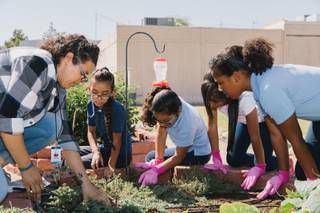
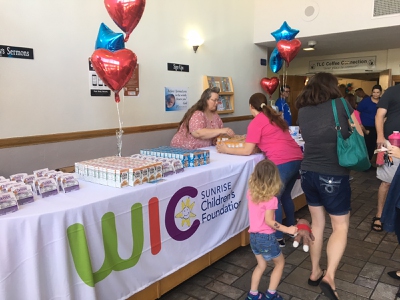
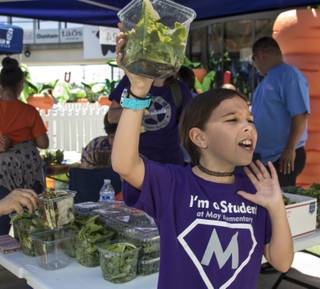
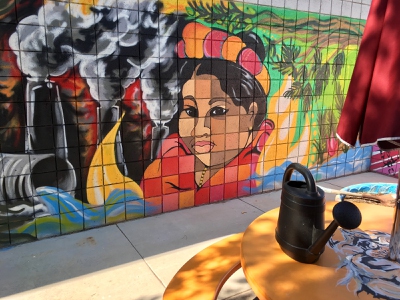

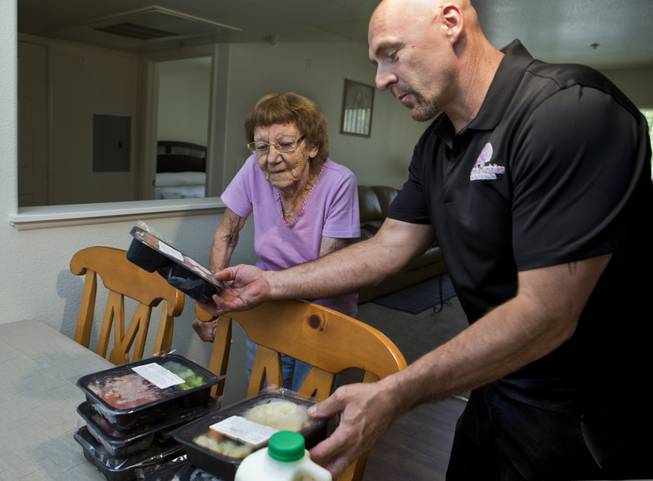
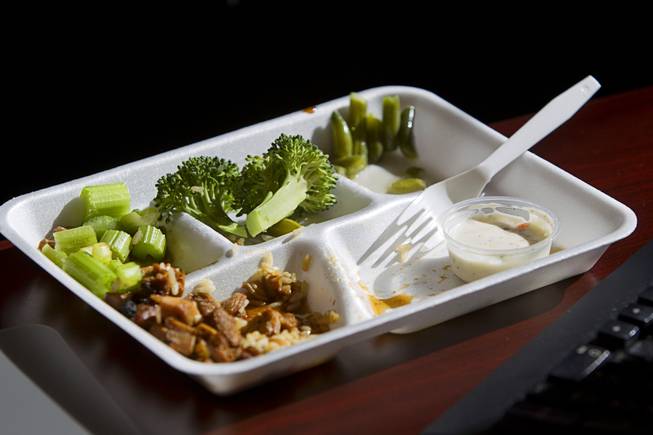

Join the Discussion:
Check this out for a full explanation of our conversion to the LiveFyre commenting system and instructions on how to sign up for an account.
Full comments policy